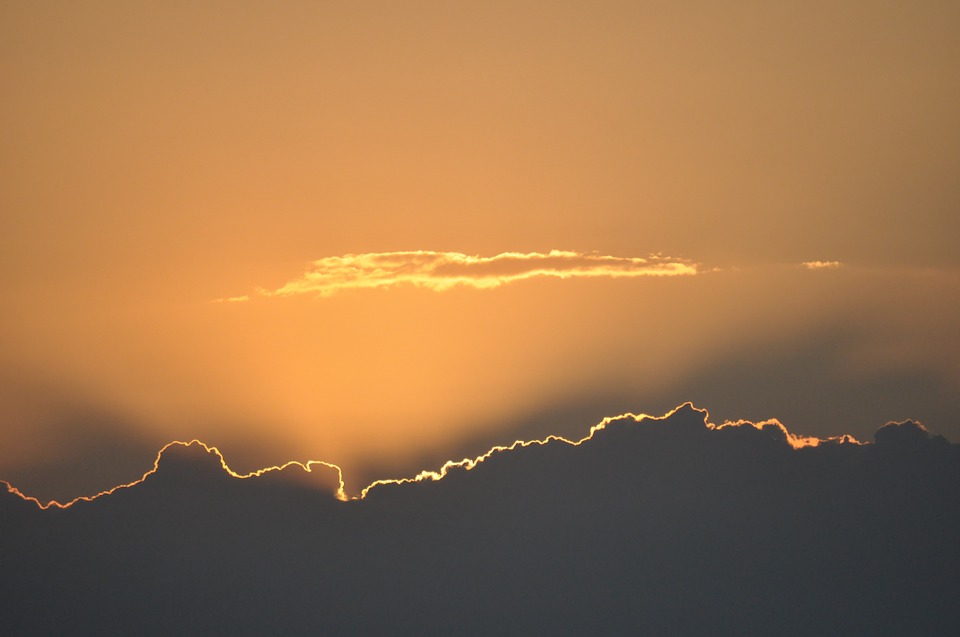In “The Secret of the Veda” Sri Aurobindo wrote:
The cow and horse, go and aśva, are constantly associated. Usha, the Dawn, is described as gomat aśvavatī; Dawn gives to the sacrificer horses and cows. As applied to the physical dawn gomatī means accompanied by or bringing the rays of light and is an image of the dawn of illumination in the human mind. Therefore aśvavatī also cannot refer merely to the physical steed; it must have a psychological significance as well. A study of the Vedic horse led me to the conclusion that go and aśva represent the two companion ideas of Light and Energy, Consciousness and Force, which to the Vedic and Vedantic mind were the double or twin aspect of all the activities of existence…..
In the hymns to the Dawn the symbolic sense of the cows of light is equally clear. Dawn is described always as gomatī, which must mean, obviously, luminous or radiant; for it would be nonsense to use “cowful” in a literal sense as the fixed epithet of the Dawn. But the image of the cows is there in the epithet; for Usha is not only gomatī, she is gomatī aśvavatī; she has always with her her cows and her horses. She creates light for all the world and opens out the darkness as the pen of the Cow, where we have without any possibility of mistake the cow as the symbol of light….
 In our psychological interpretation of the Veda we are met at every turn by the ancient conception of the Truth as the path to the Bliss. Usha, the dawn of the illumination of the Truth, must necessarily bring also the joy and the beatitude. This idea of the Dawn as the bringer of delight we find constantly in the Veda….
In our psychological interpretation of the Veda we are met at every turn by the ancient conception of the Truth as the path to the Bliss. Usha, the dawn of the illumination of the Truth, must necessarily bring also the joy and the beatitude. This idea of the Dawn as the bringer of delight we find constantly in the Veda….
These are by no means all the indications of the psychological character of the Vedic Dawn that we find in the Rig Veda. Dawn is constantly represented as awakening to vision, perception, right movement. “The goddess,” says Gotama Rahugana, “fronts and looks upon all the worlds, the eye of vision shines with an utter wideness; awakening all life for movement she discovers speech for all that thinks,” viśvasya vācam avidan manāyoḥ. (I.92.9). We have here a Dawn that releases life and mind into their fullest wideness and we ignore the whole force of the words and phrases chosen by the Rishi if we limit the suggestion to a mere picture of the reawakening of earthly life in the physical dawning….
This perception, this vision is, we are told, that of the Immortality, amṛtasya ketuḥ. (III.61.3); it is the light, in other words, of the Truth and the Bliss which constitute the higher or immortal consciousness. Night in the Veda is the symbol of our obscure consciousness full of ignorance in knowledge and of stumblings in will and act, therefore of all evil, sin and suffering; light is the coming of the illuminated higher consciousness which leads to truth and happiness. We find constantly the opposition of the two words duritam and suvitam. Duritam means literally stumbling or wrong going, figuratively all that is wrong and evil, all sin, error, calamity; suvitam means literally right or good going and expresses all that is good and happy, it means especially the felicity that comes by following the right path. Thus Vasishtha says of the goddess (VII.78.2), “Dawn comes divine repelling by the Light all darknesses and evils,” viśvā tamāṁsi duritā; and in a number of verses the goddess is described as awakening, impelling or leading men to right going, to the happiness, suvitāya. Therefore she is the leader not only of happy truths, but of our spiritual wealth and joy, bringer of the felicity which is reached by man or brought to him by the Truth, eṣā netrī rādhasaḥ sūnṛtānām ….
Devānām cakṣuḥ subhagā vahantī,
śvetaṁ nayantī sudṛśīkam aśvam;
Uṣā adarśi raśmibhir vyaktā,
citrāmaghā viśvam anu prabhūtā.“Happy, bringing the gods’ eye of vision, leading the white Horse that has perfect sight, Dawn is seen expressed entirely by the rays, full of her varied riches, manifesting her birth in all things.” It is clear enough that the white horse (a phrase applied to the god Agni who is the Seer-Will, kavikratu, the perfectly-seeing force of divine will in its works, V.1.4) is entirely symbolical [1] and that the “varied riches” she brings with her are also a figure and certainly do not mean physical wealth.
Sri Aurobindo: The Secret of the Veda
[1] The symbolism of the horse is quite evident in the hymns of Dirghatamas to the Horse of the Sacrifice, the hymns of various Rishis to the Horse Dadhikravan and again in the opening of the Brihadaranyaka Upanishad in which “Dawn is the head of the Horse” is the first phrase of a very elaborate figure.



